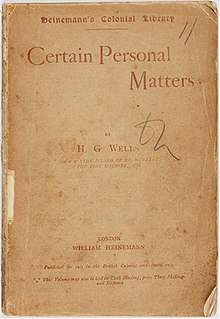
The Open Conspiracy: Blue Prints for a World Revolution was published in 1928 by H. G. Wells, when he was 62 years old. It was revised and expanded in 1930 with the additional subtitle A Second Version of This Faith of a Modern Man Made More Explicit and Plain. In 1931 a further revised edition appeared titled What Are We to Do with Our Lives?. A final version appeared in 1933 under its original title. Many of its ideas are anticipated in Wells's 1926 novel The World of William Clissold.
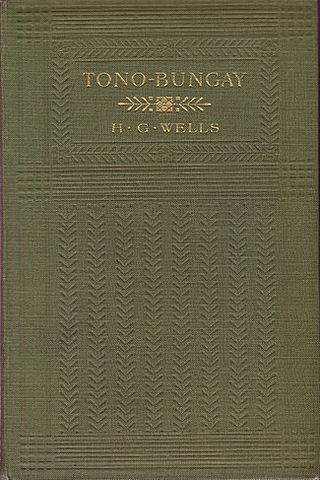
Tono-Bungay is a realist semiautobiographical novel written by H. G. Wells and first published in book form in 1909. It has been called "arguably his most artistic book". It had been serialised before book publication, both in the United States, in The Popular Magazine, beginning in the issue of September 1908, and in Britain, in The English Review, beginning in the magazine's first issue in December 1908.
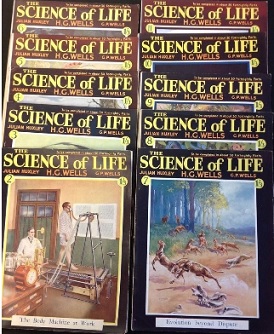
The Science of Life is a book written by H. G. Wells, Julian Huxley and G. P. Wells, published in three volumes by The Waverley Publishing Company Ltd in 1929–30, giving a popular account of all major aspects of biology as known in the 1920s. It has been called "the first modern textbook of biology" and "the best popular introduction to the biological sciences". Wells's most recent biographer notes that The Science of Life "is not quite as dated as one might suppose".

A Modern Utopia is a 1905 novel by H. G. Wells.
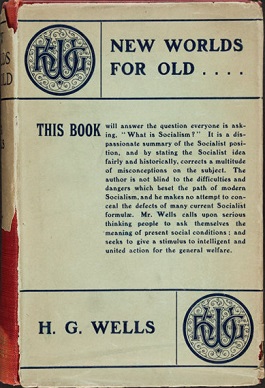
New Worlds for Old (1908), which appeared in some later editions with the subtitle "A Plain Account of Modern Socialism," was one of several books and pamphlets that H. G. Wells wrote about the socialist future in the period 1901–1908, while he was engaged in an effort to reform the Fabian Society.

The Wonderful Visit is an 1895 novel by H. G. Wells. With an angel—a creature of fantasy unlike a religious angel—as protagonist and taking place in contemporary England, the book could be classified as contemporary fantasy, although the genre was not recognised in Wells's time. The Wonderful Visit also has strong satirical themes, gently mocking customs and institutions of Victorian England as well as idealistic rebellion itself.

Mr. Britling Sees It Through is H.G. Wells's "masterpiece of the wartime experience in south eastern England." The novel was published in September 1916.
David C. Smith (1929–2009) was Bird and Bird Professor of History at University of Maine, Orono. He studied the relationship between geography and wealth. He was born in Lewiston, Maine and wrote The First Century: A History of the University of Maine, 1865–1965, the seminal history of the University of Maine.

Marriage is a 1912 novel by H. G. Wells.

The World of William Clissold is a 1926 novel by H. G. Wells published initially in three volumes. The first volume was published in September to coincide with Wells's sixtieth birthday, and the second and third volumes followed at monthly intervals.

Meanwhile is a 1927 novel by H. G. Wells set in an Italian villa early in 1926.

The Story of a Great Schoolmaster is a 1924 biography of Frederick William Sanderson (1857–1922) by H. G. Wells. It is the only biography Wells wrote. Sanderson was a personal friend, having met Wells in 1914 when his sons George Philip ('Gip'), born in 1901, and Frank Richard, born in 1903, became pupils at Oundle School, of which Sanderson was headmaster from 1892 to 1922. After Sanderson died, while giving a lecture at University College London, at which he was introduced by Wells, the famous author agreed to help produce a biography to raise money for the school. But in December 1922, after disagreements emerged with Sanderson's widow about his approach to the subject, Wells withdrew from the official biography and published his own work separately.
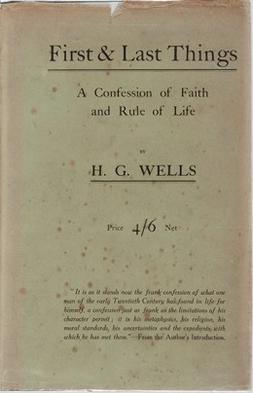
First and Last Things is a 1908 work of philosophy by H. G. Wells setting forth his beliefs in four "books" entitled "Metaphysics," "Of Belief," "Of General Conduct," and "Some Personal Things." Parts of the book were published in the Independent Magazine in July and August 1908. Wells revised the book extensively in 1917, in response to his religious conversion, but later published a further revision in 1929 that restored much of the book to its earlier form. Its main intellectual influences are Darwinism and certain German thinkers Wells had read, such as August Weismann. The pragmatism of William James, who had become a friend of Wells, was also an influence.

An Englishman Looks at the World is a 1914 essay collection by H. G. Wells containing journalistic pieces written between 1909 and 1914. The book consists of twenty-six pieces ranging from five to sixty-two pages in length. An American edition was published the same year by Harper and Brothers under the title Social Forces in England and America.
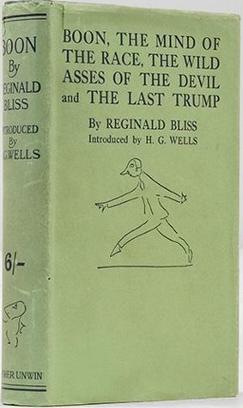
Boon is a 1915 work of literary satire by H. G. Wells. It purports, however, to be by the fictional character Reginald Bliss, and for some time after publication Wells denied authorship. Boon is best known for its part in Wells's debate on the nature of literature with Henry James, who is caricatured in the book. But in Boon Wells also mocks himself, calling into question and ridiculing a notion he held dear—that of humanity's collective consciousness.

A Year of Prophesying collects 55 newspaper columns written by H. G. Wells in 1923 and 1924.

The Work, Wealth and Happiness of Mankind by H. G. Wells is the final work of a trilogy of which the first volumes were The Outline of History (1919–1920) and The Science of Life (1929). Wells conceived of the three parts of his trilogy as, respectively, "a survey of history, of the science of life, and of existing conditions." Intended as an unprecedented "picture of all mankind to-day" in all its manifold activities, he called it "the least finished work . . . because it is the most novel." He hoped the volumes would play a role in the open conspiracy to establish a progressive world government that he had been promoting since the mid-1920s.

The Bulpington of Blup is a 1932 novel by H. G. Wells. It is a character study analyzing the psychological sources of resistance to Wellsian ideology, and was influenced by Wells's acquaintance with Carl Gustav Jung and his ideas.

Anticipations of the Reaction of Mechanical and Scientific Progress upon Human Life and Thought, generally known as Anticipations, was written by H.G. Wells at the age of 34. He later called the book, which became a bestseller, "the keystone to the main arch of my work." His most recent biographer, however, calls the volume "both the starting point and the lowest point in Wells's career as a social thinker."
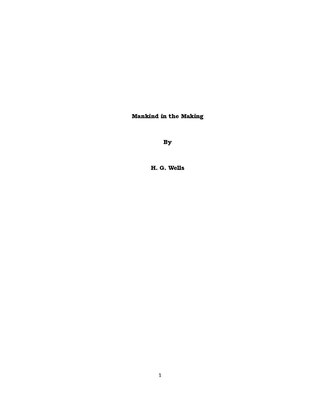
Mankind in the Making (1903) is H.G. Wells's sequel to Anticipations (1901). Mankind in the Making analyzes the "process" of "man's making," i.e. "the great complex of circumstances which mould the vague possibilities of the average child into the reality of the citizen of the modern state." Taking an aggressive tone in criticizing many aspects of contemporary institutions, Wells proposed a doctrine he called "New Republicanism," which "tests all things by their effect upon the evolution of man."
